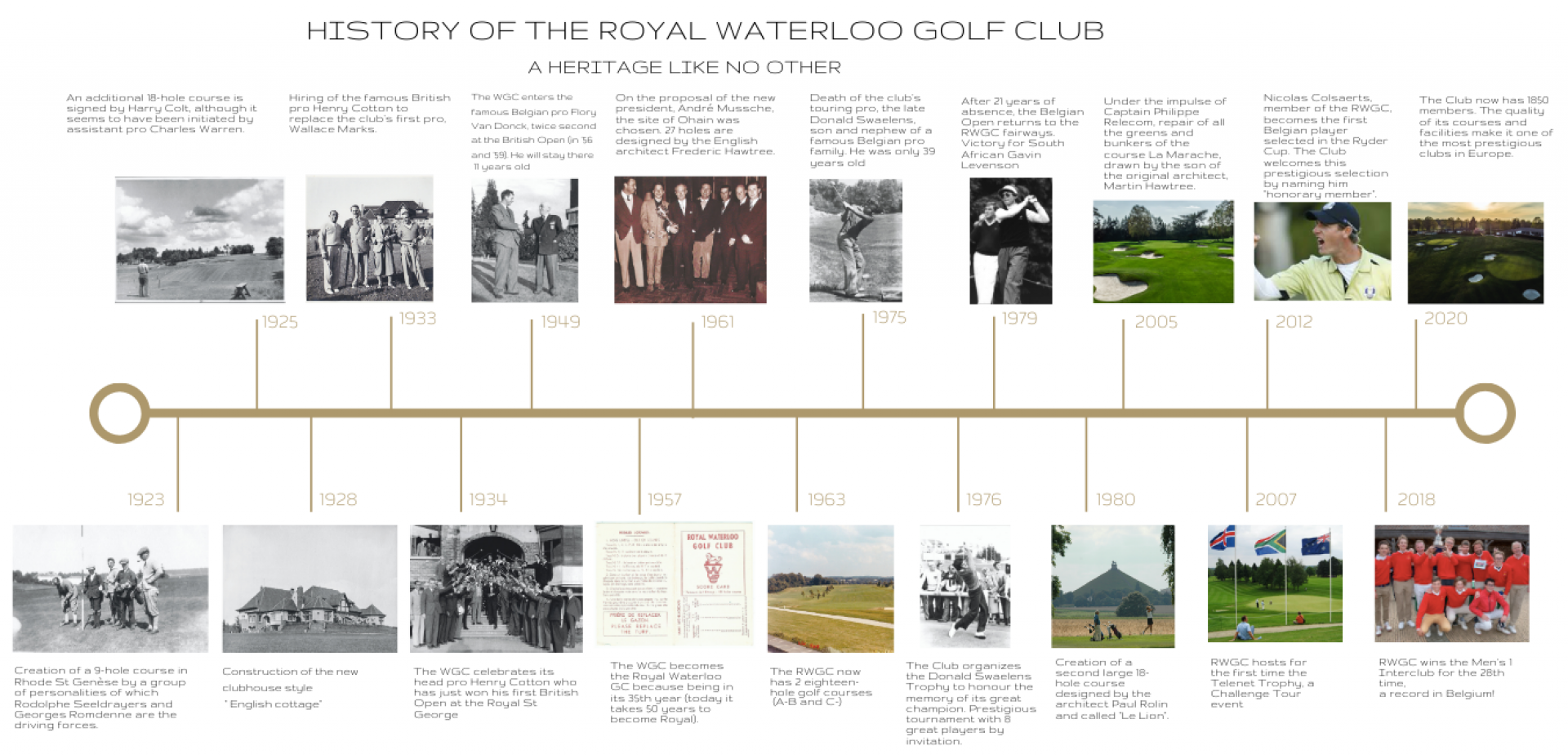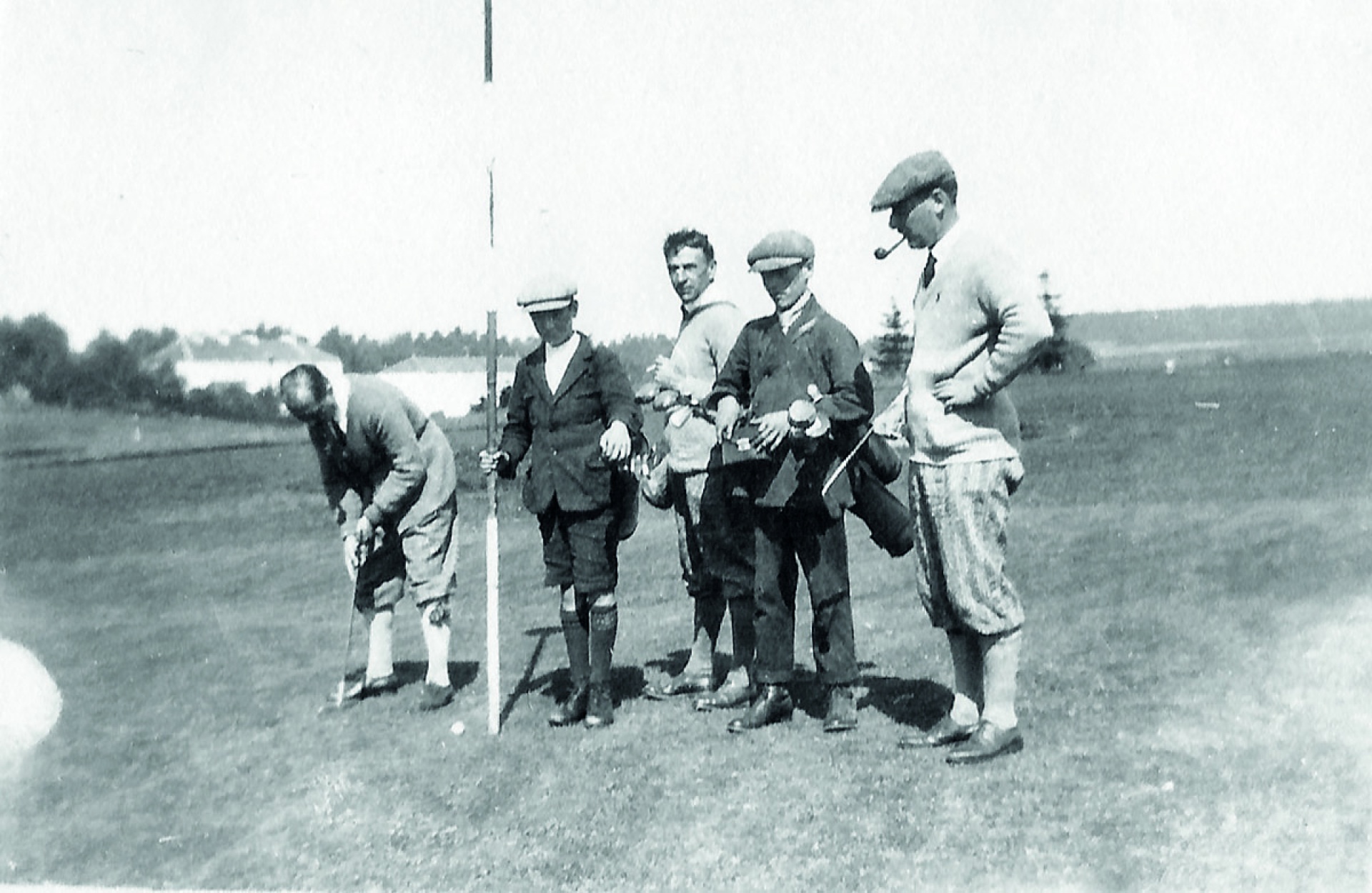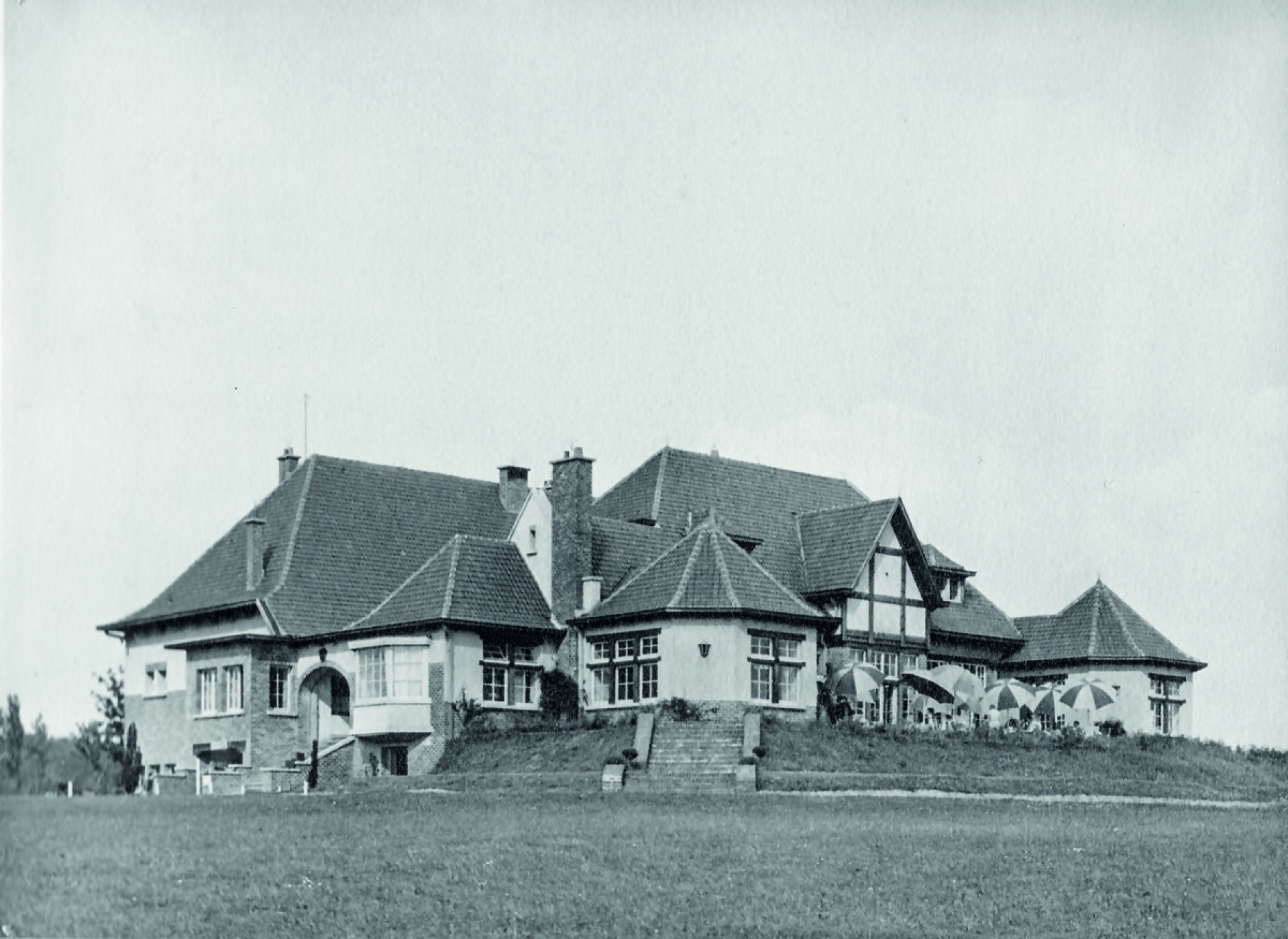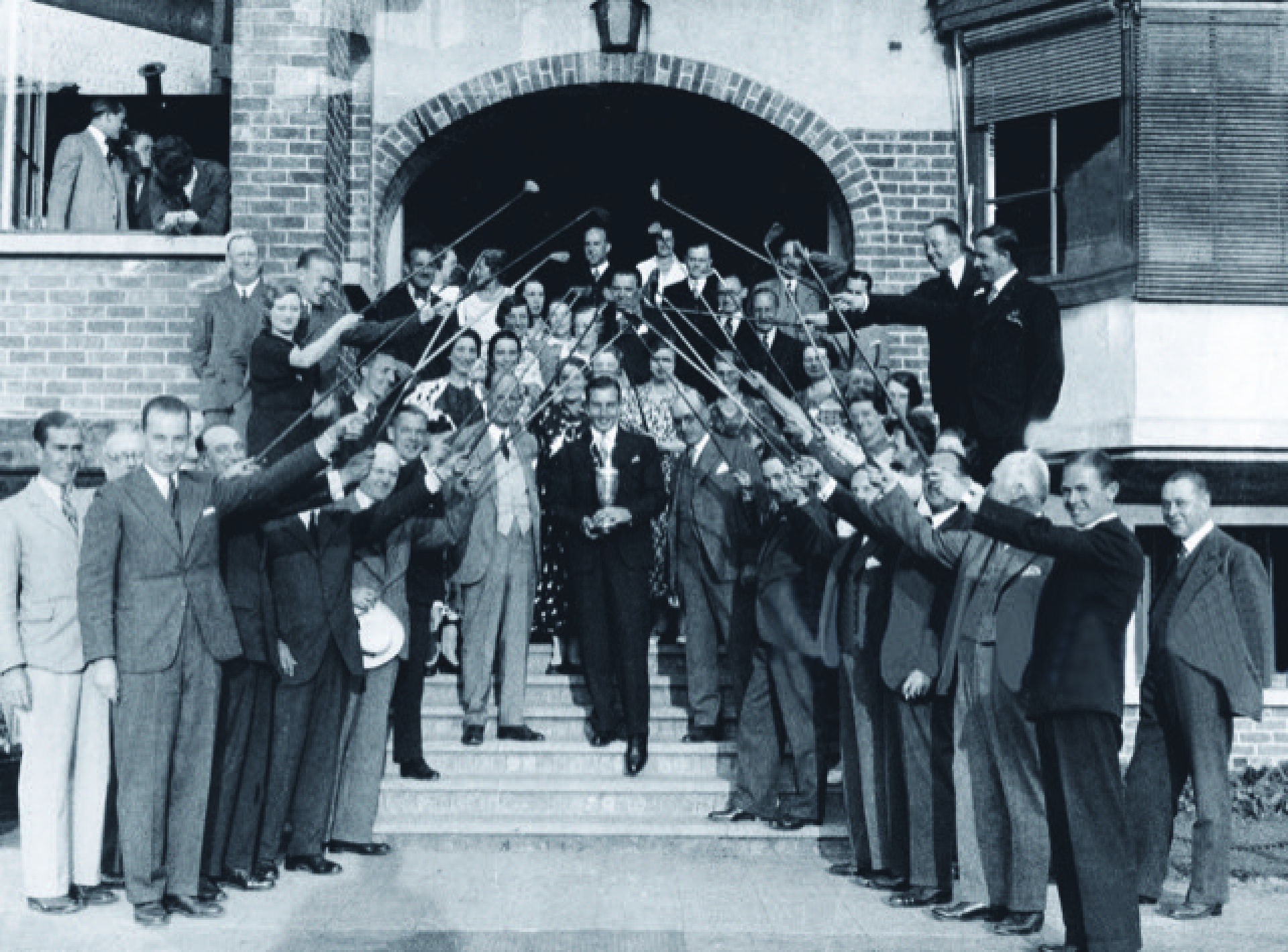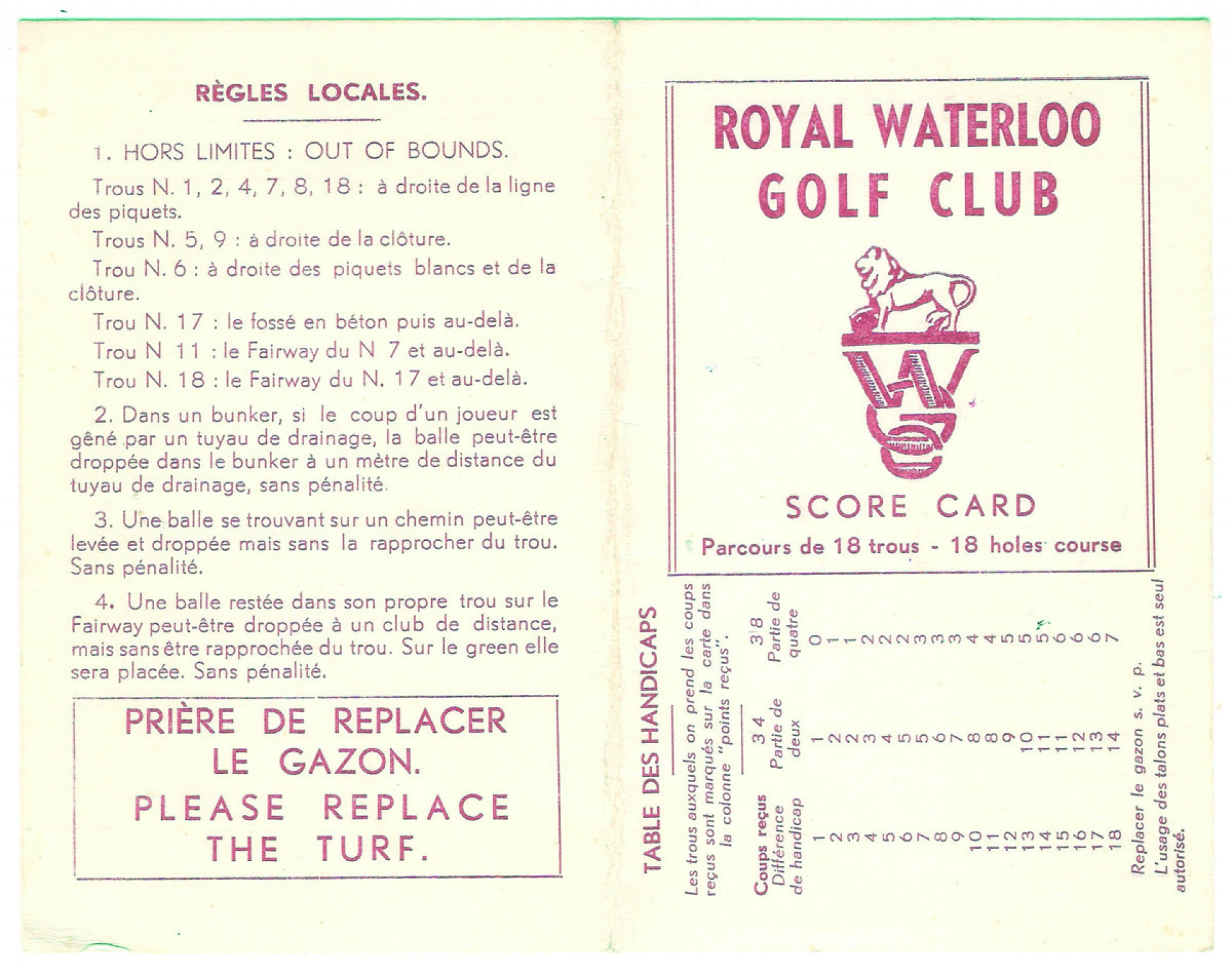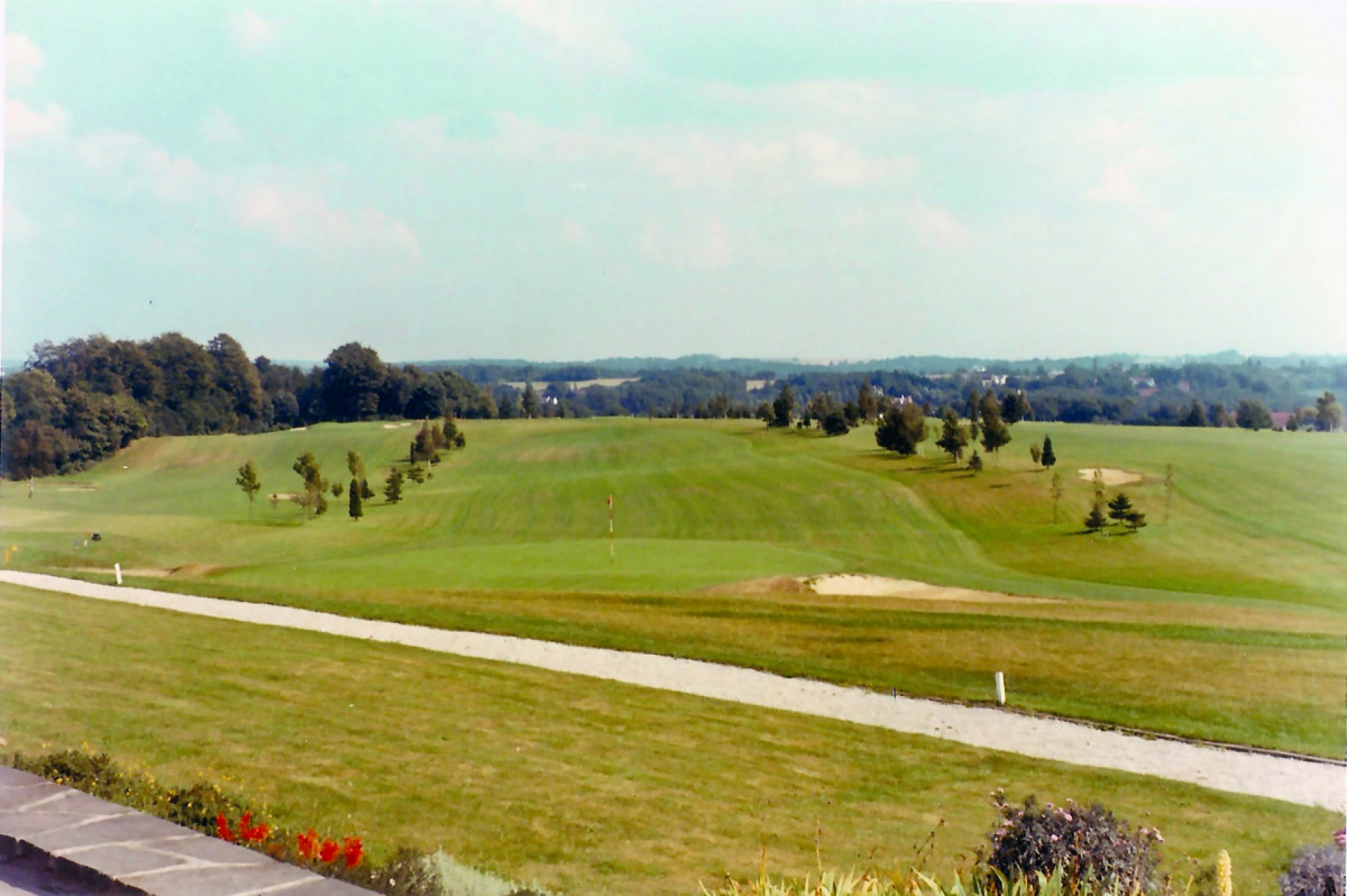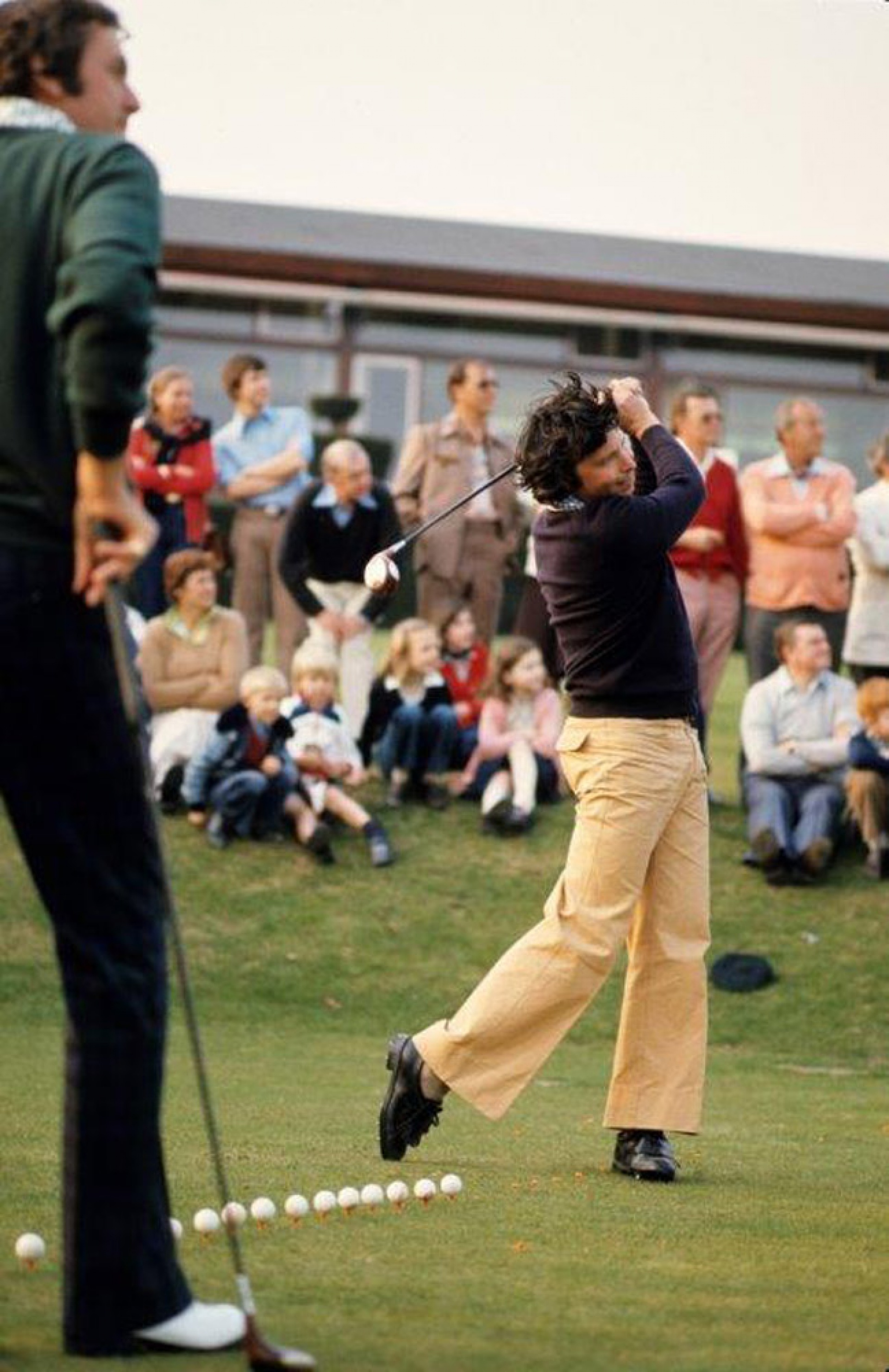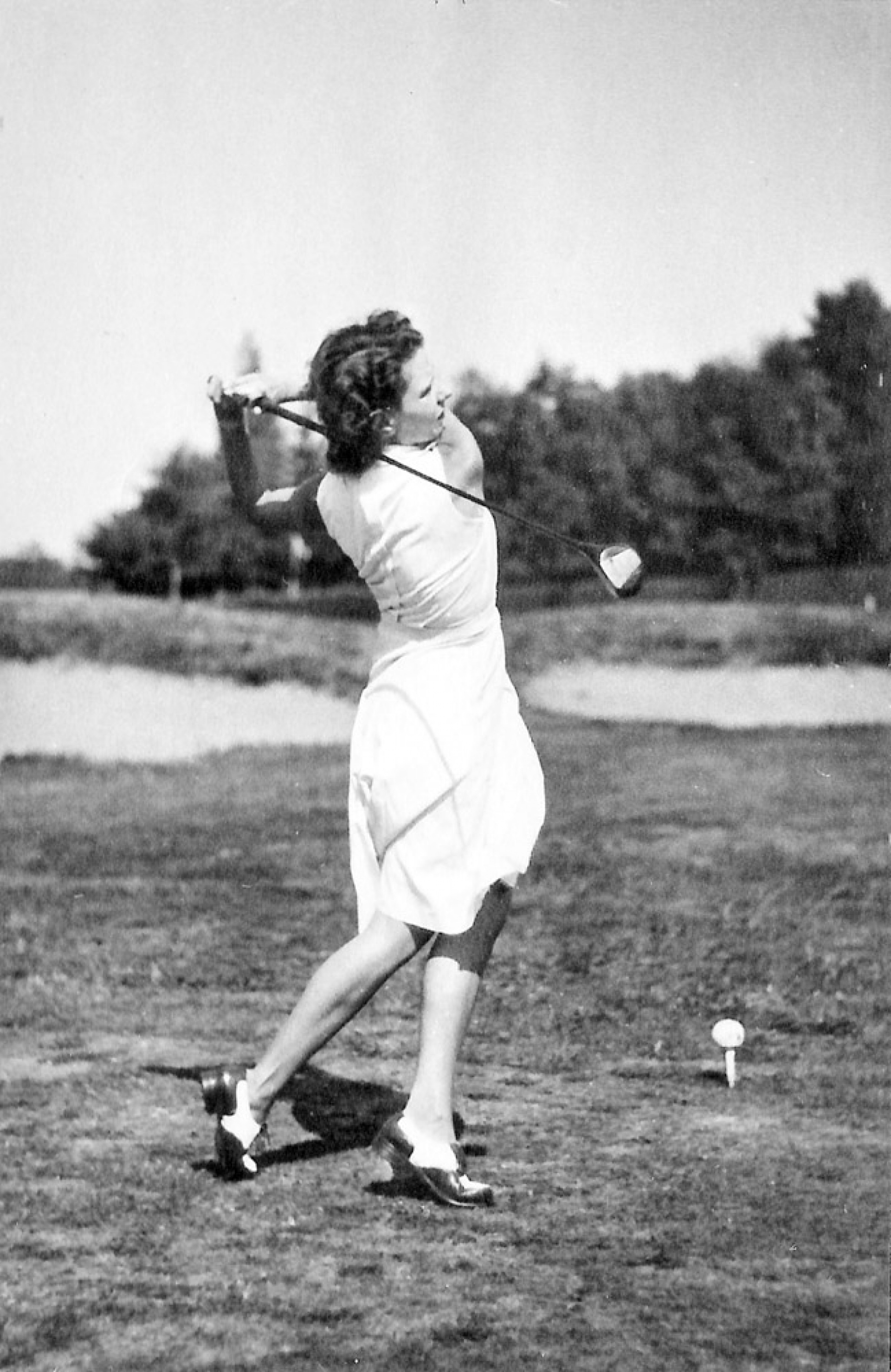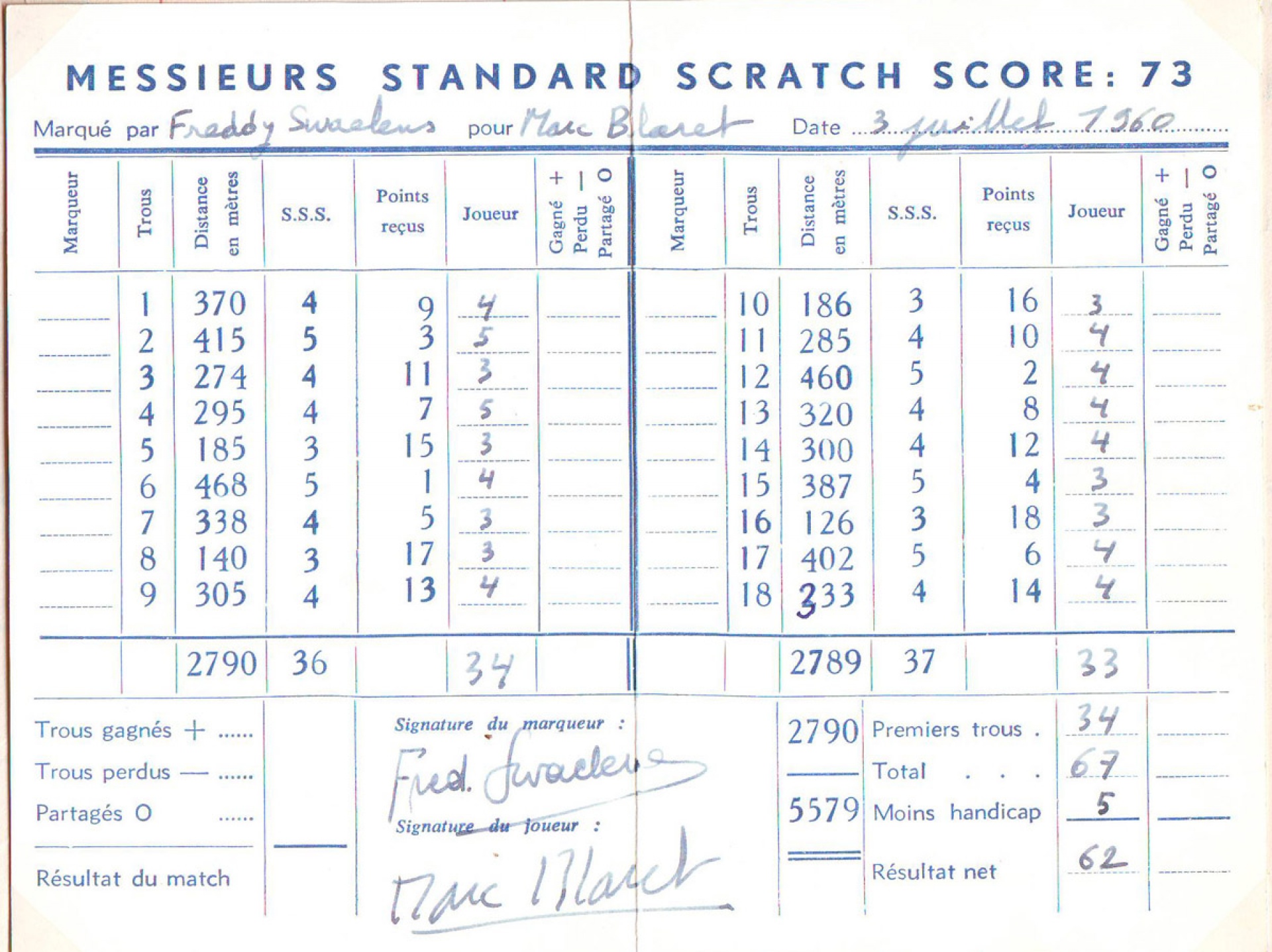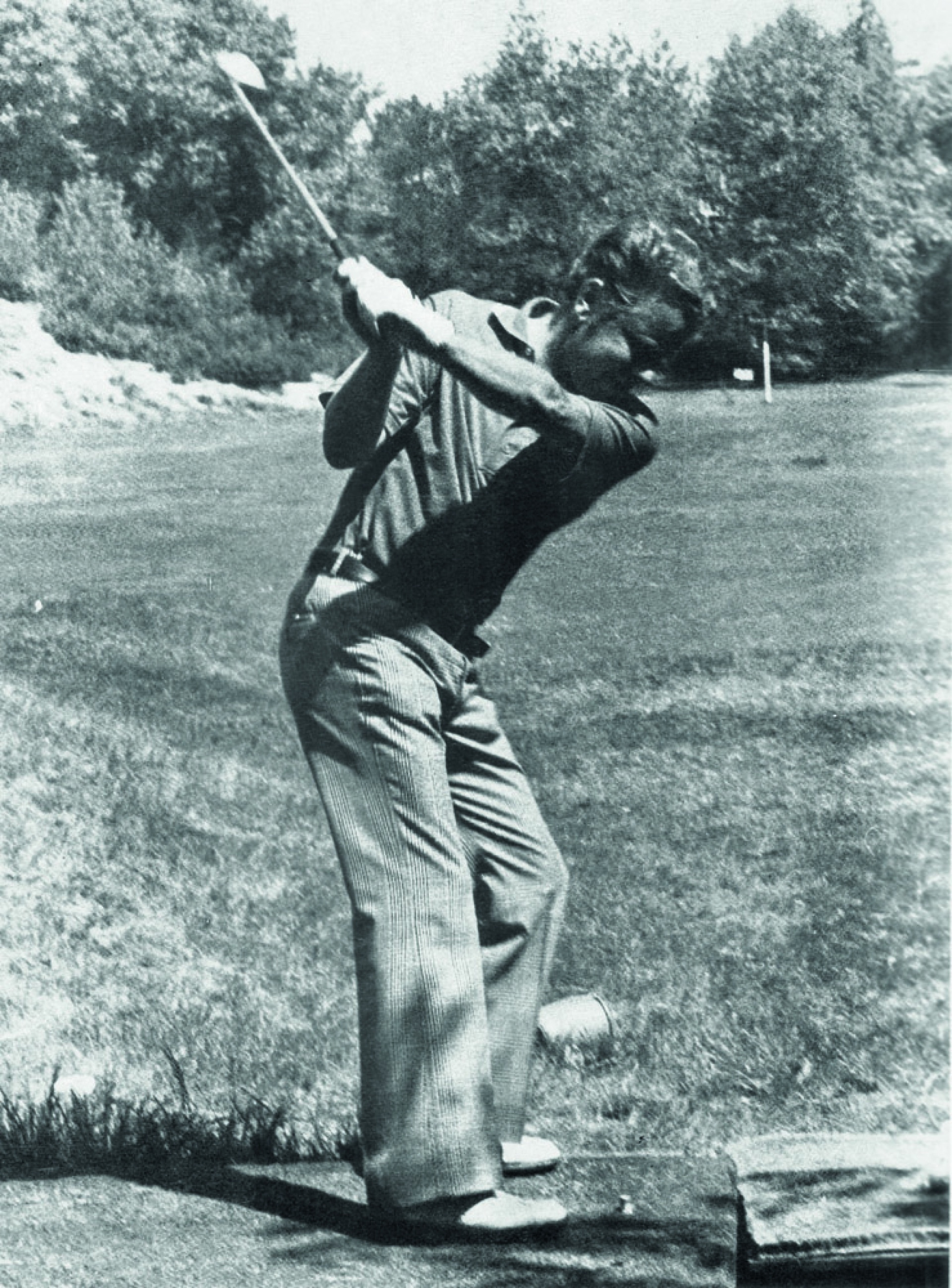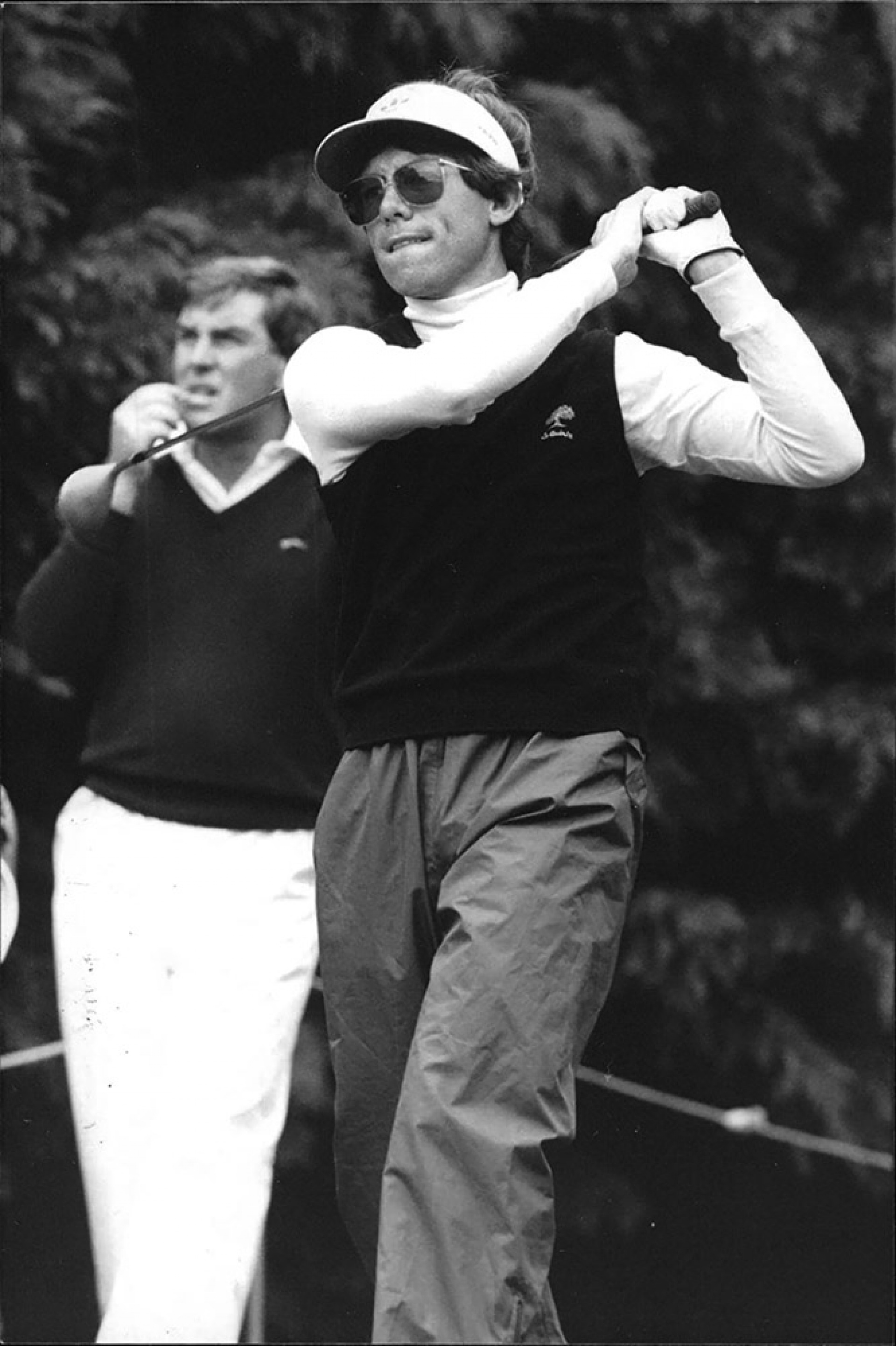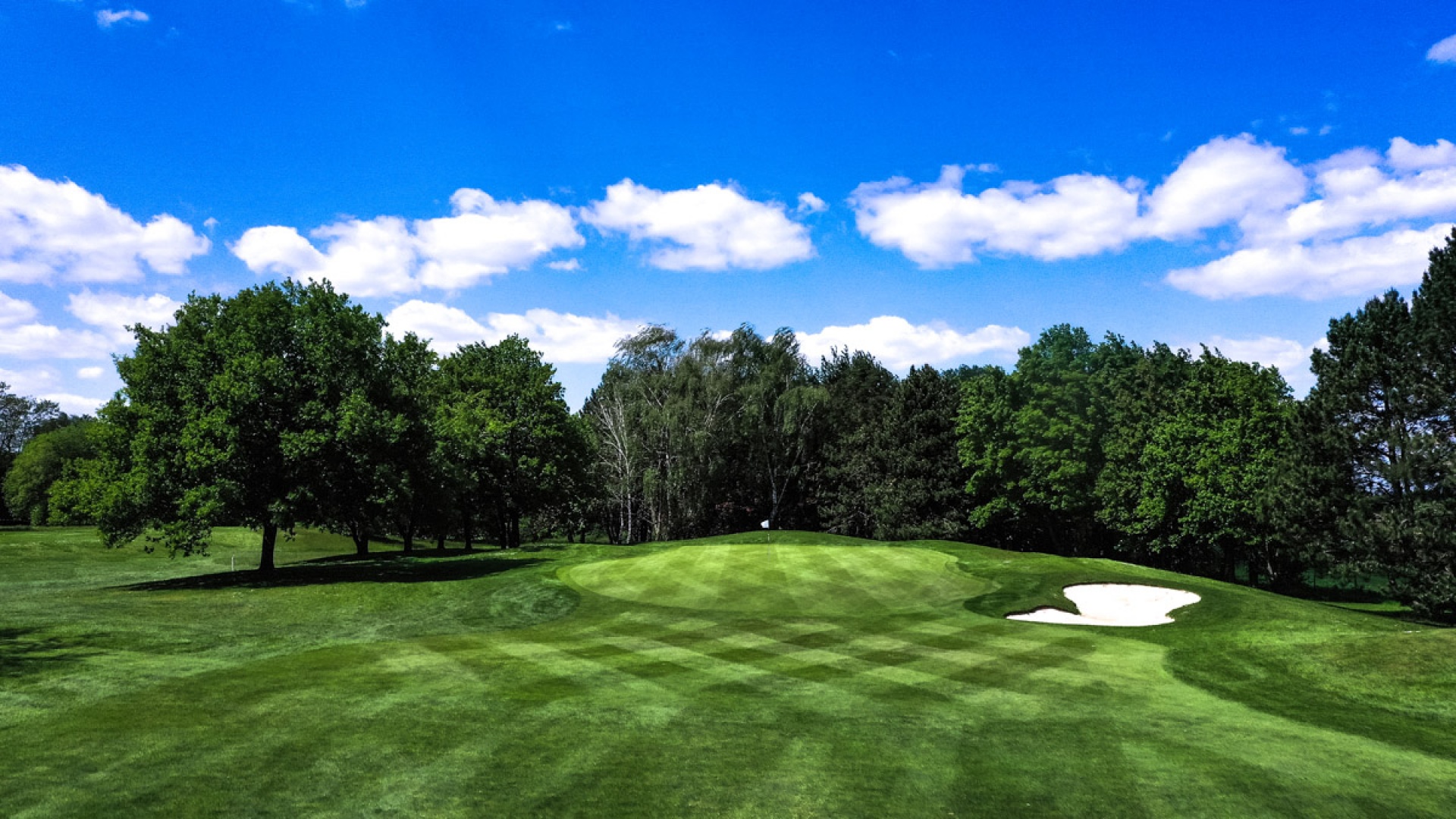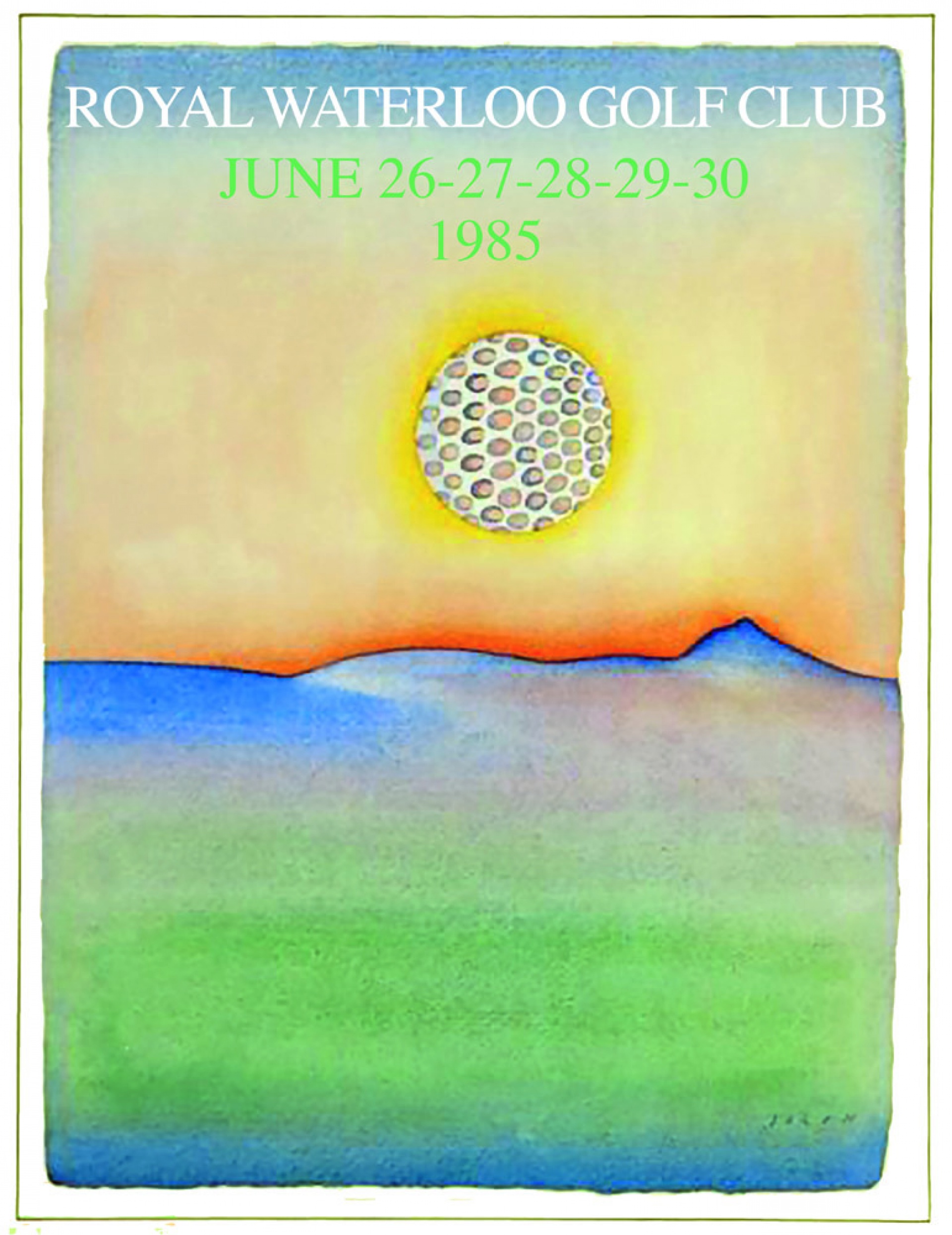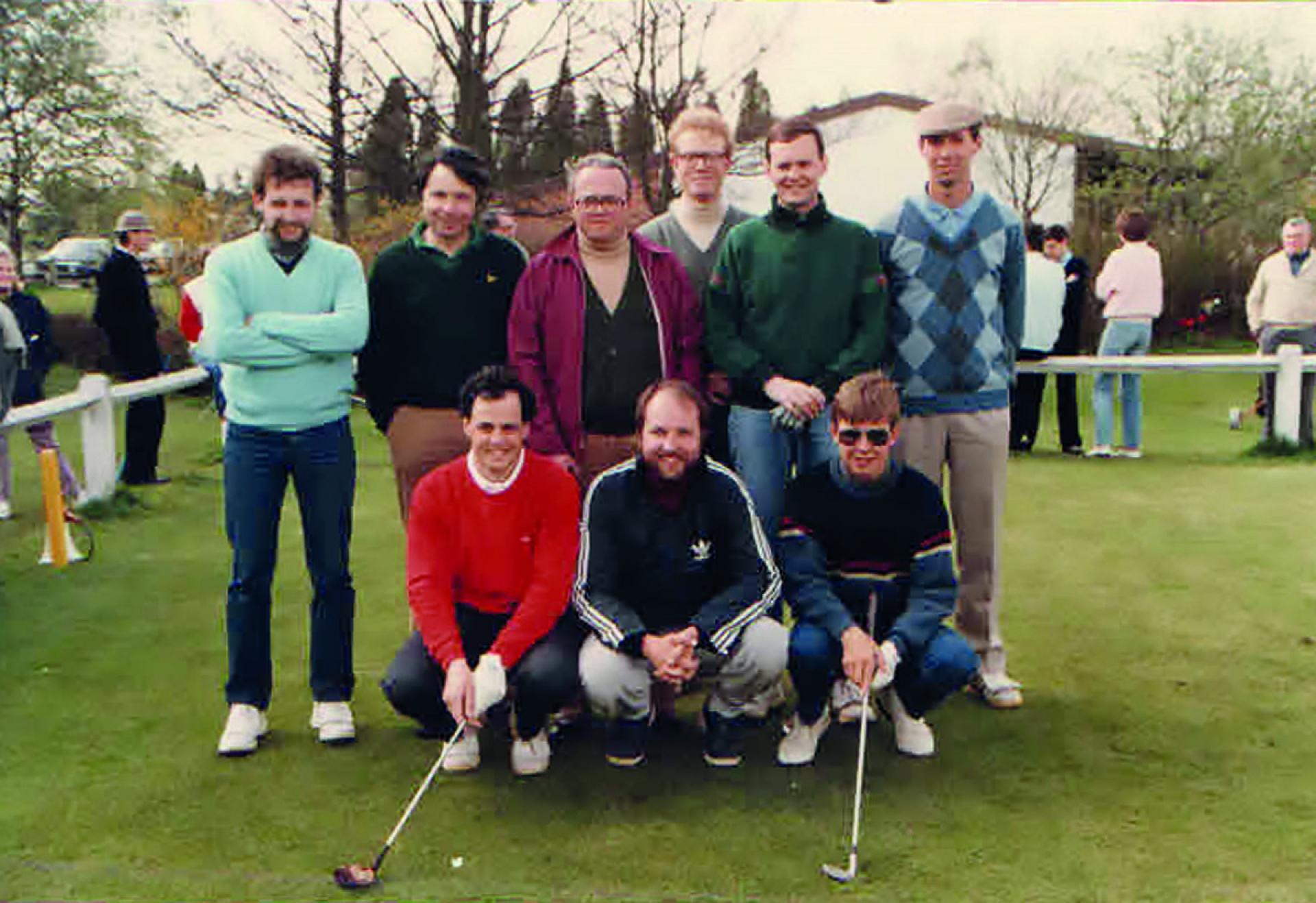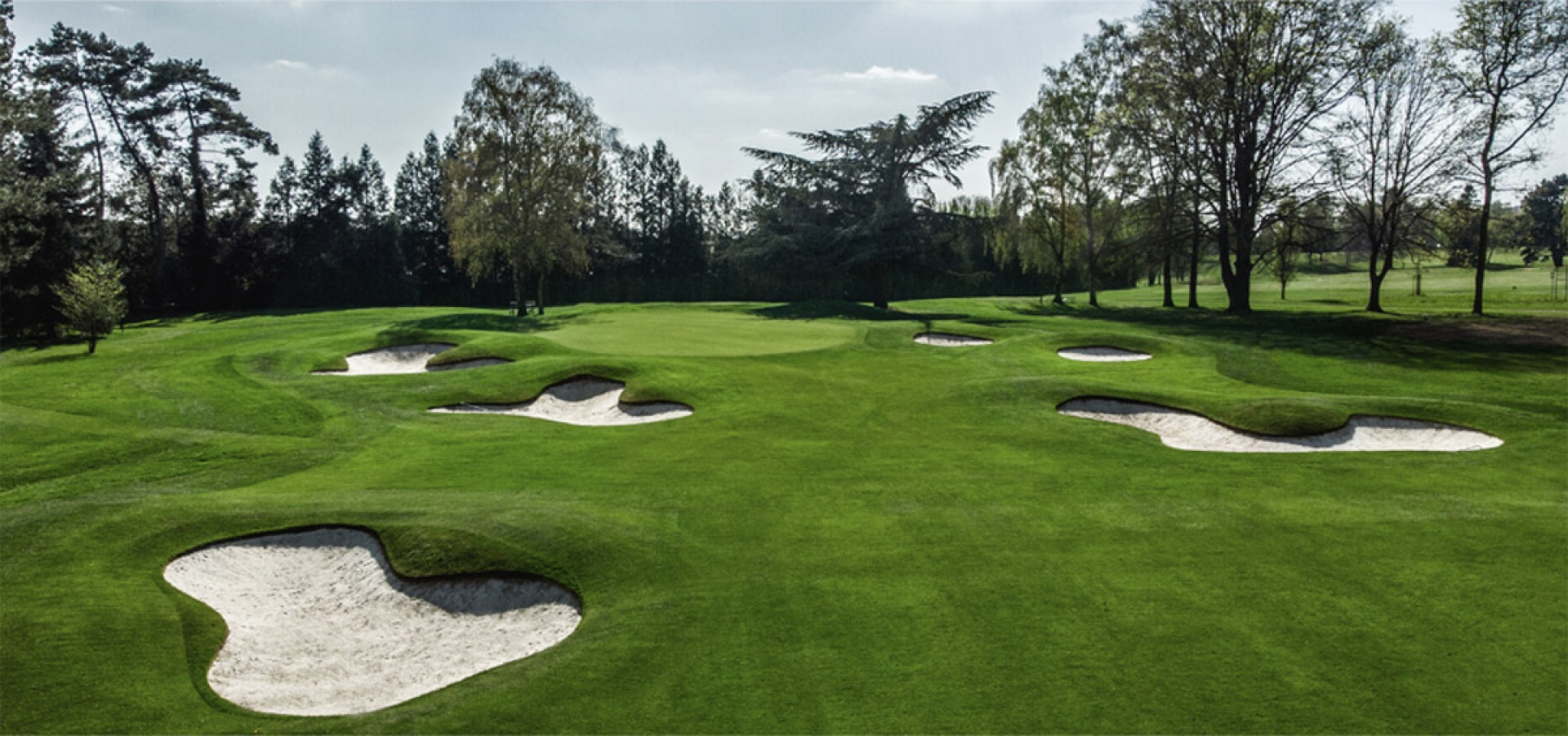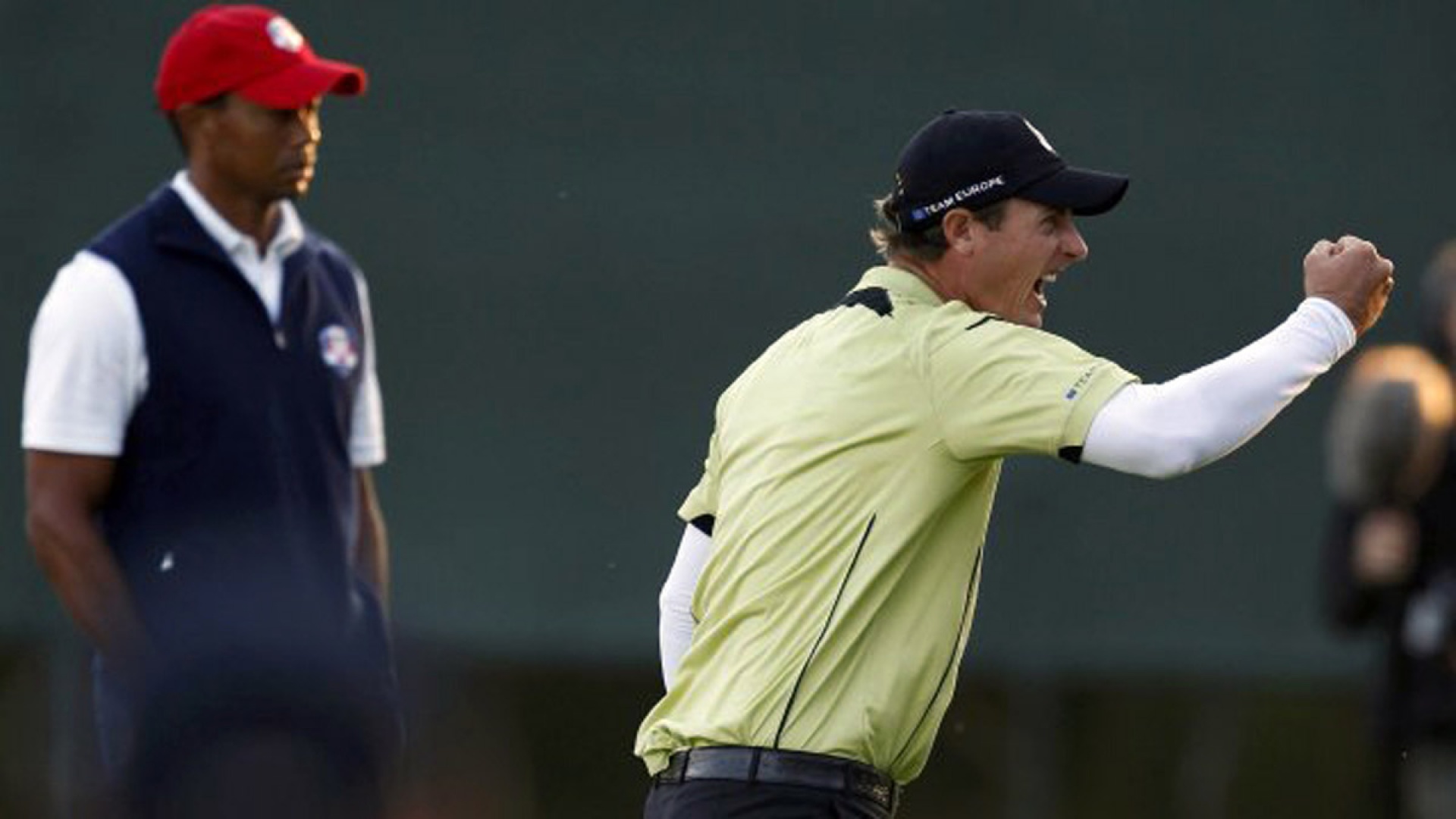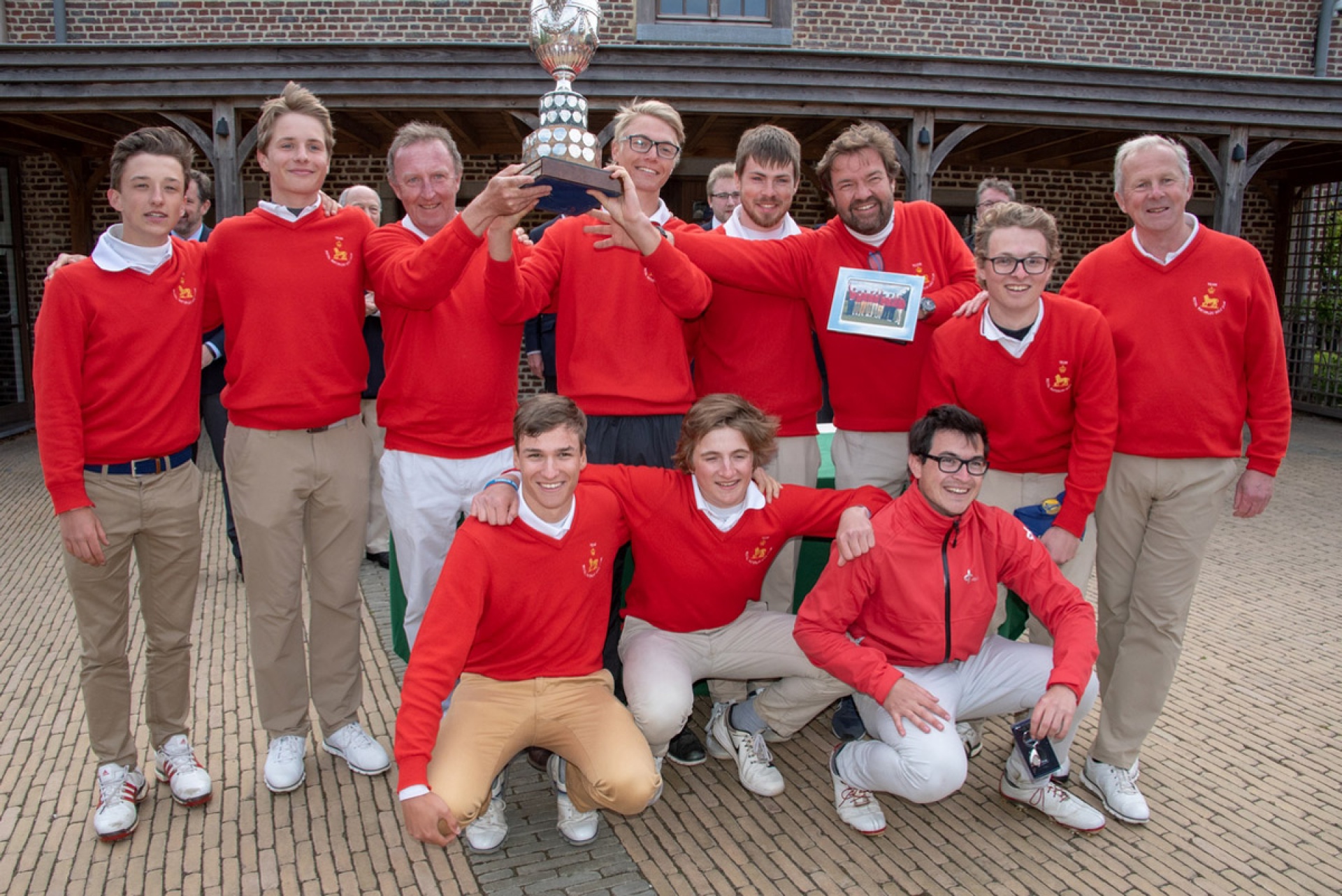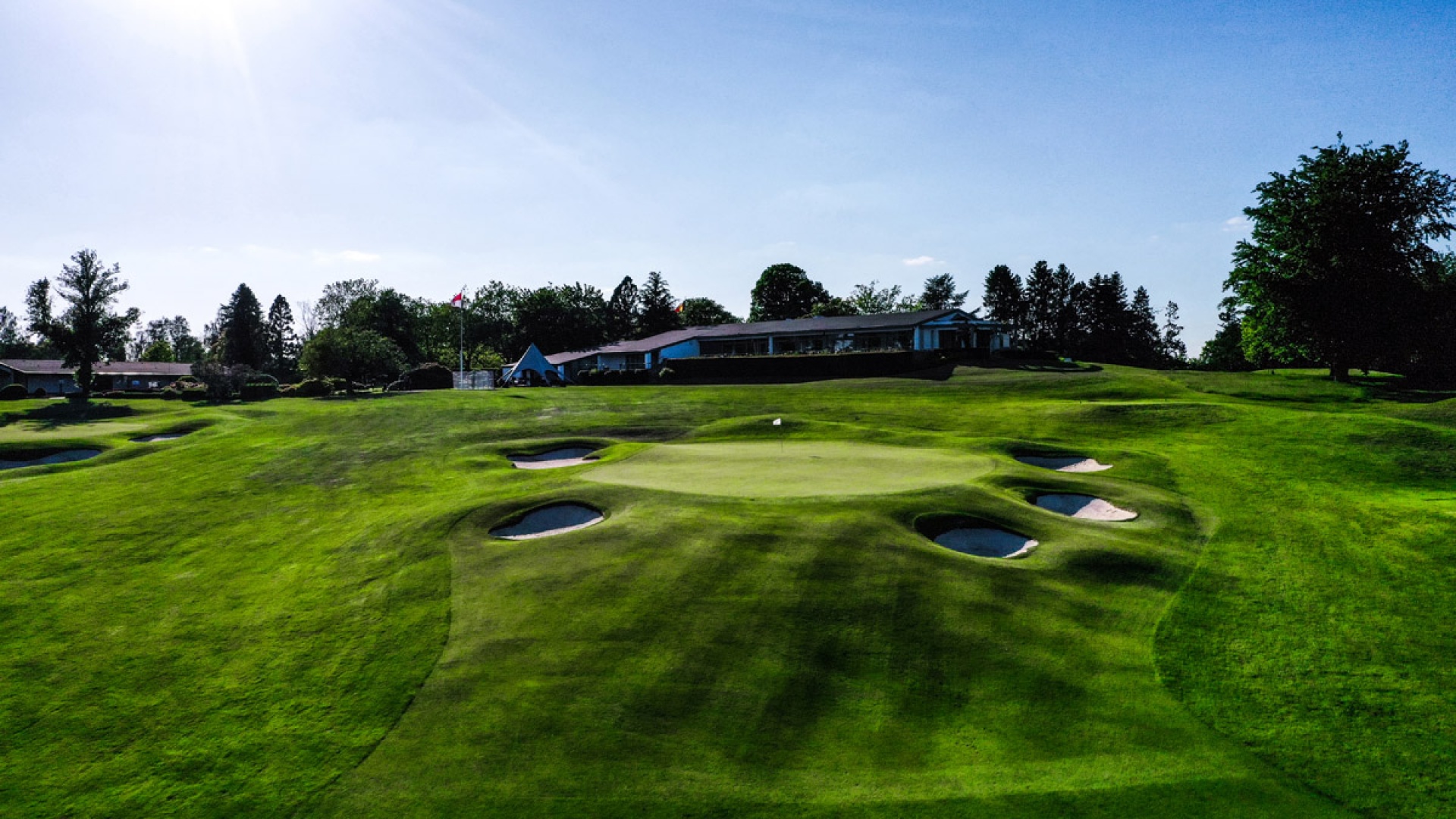Our heritage
Created in 1923 in the borough of Rhode-Saint-Genèse, Royal Waterloo Golf Club was established in 1961 in Ohain (borough of Lasne) on the prestigious "Marache" course (also called "A-B") and two 9-hole courses, the "C" and "D" designed by the famous British architect Fred Hawtree.
Between 2003 and 2006, all the greens and bunkers of the mythical "Marache" and "Bois-Héros" courses were redesigned by Martin Hawtree and rebuilt according to USGA standards.
In 2008, the Clubhouse was renovated and expanded.
In 2014 and 2015, it is the turn of the "Lion" course to be redesigned by Martin Hawtree.
A constant search for excellence...
1923: Creation of the club by a small group of businessmen and other liberal professions, some of whom, notably the tailor Georges Romdenne, had been turned away from the Royal Golf Club of Belgium (commonly known as Ravenstein). The latter along with lawyer Rodolphe W. Seeldrayers, are considered the pioneers of the new club, supported by Count Joseph d'Oultremont, Paul Loicq and Sidney Mills. The golf course was created in the borough of Rhode St Genèse on land sub-leased to the farmer César Blaret, who himself was the tenant of the land belonging to politician Albert Marteaux.
A 37-year long lease was concluded which was to end on December 31, 1960.
The course, initially 9 holes, was increased in 1925 to 18 holes (5600 metres). It seems that the original design was made by the club pro Charles Warren, but is a signature course of famous architect Harry Colt. The small 9-hole course nevertheless survived.
1934 : Henry Cotton won the first of three (British) Open Championships at Royal St Georges and this would obviously have a very positive impact on the reputation of the club, which would see the number of new members soar. He stayed for four years and his departure at the end of 1936 - for the Aldridge club in England - was celebrated in great pomp by the club.
 Flory Van Donck, Head Pro (on left)
Flory Van Donck, Head Pro (on left)
1949 : Flory Van Donck, new head-pro welcomed by the President of the club Rodolphe Seeldrayers who will stay eleven years before leaving for Ravenstein (Royal Golf Club of Belgium).
The Waterloo Club has always shone in the Belgian Inter-club Championships: for example in 1935 & 1948.
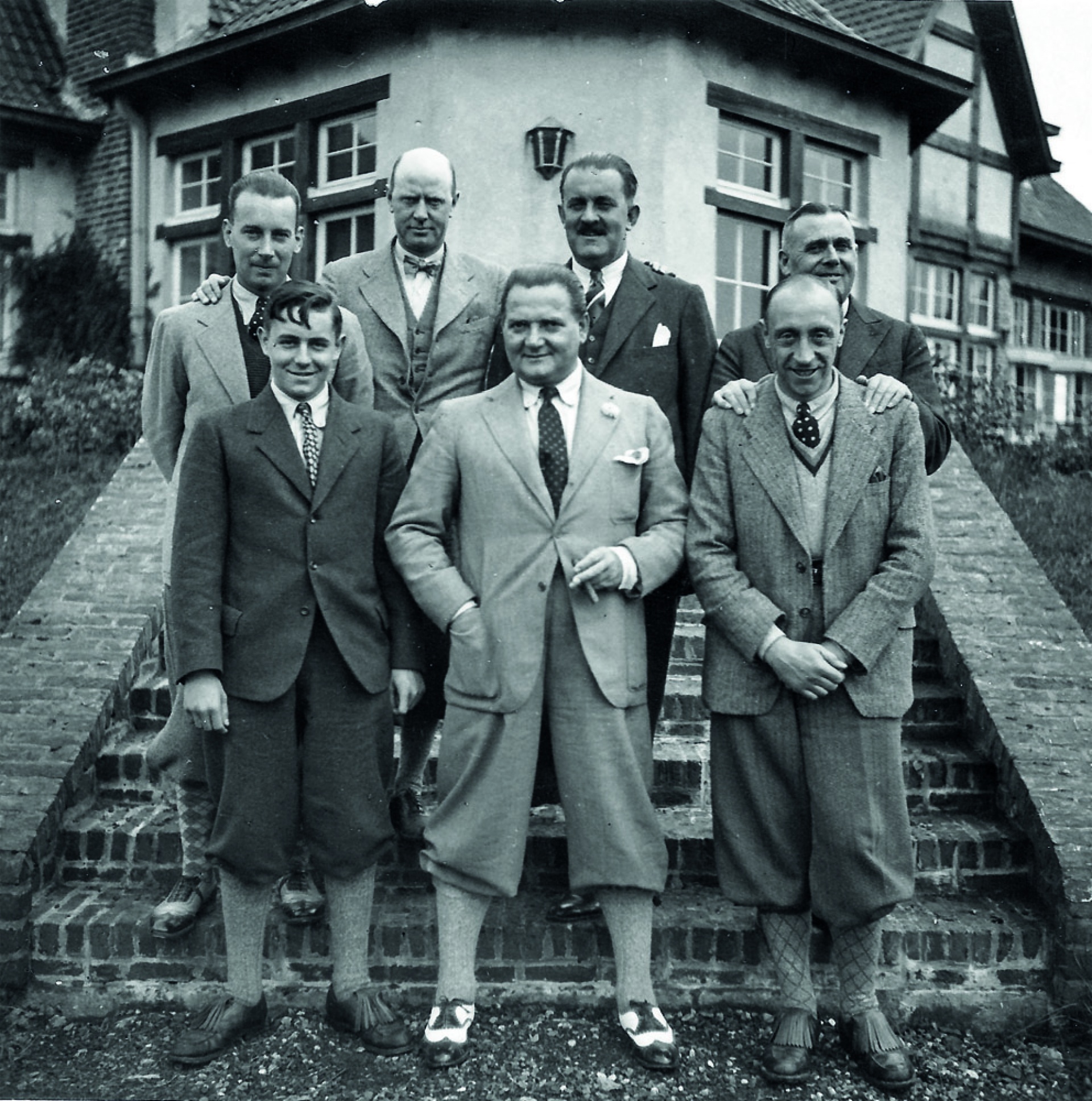 Men's team
Men's team
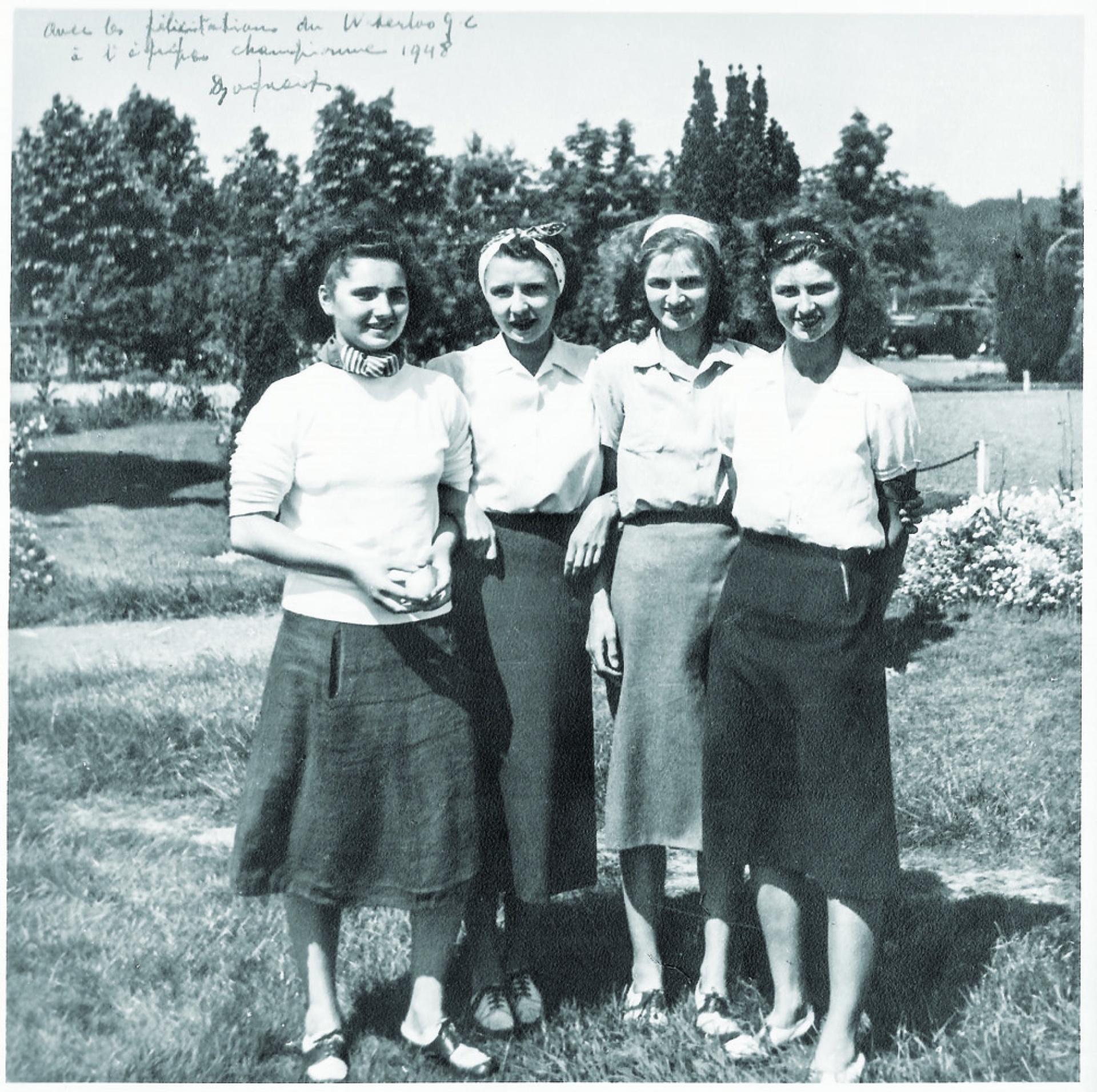 Woman team
Woman team
1959 : The club is refused the renewal of its lease by the owner, widow Renée Marteaux, who has real estate ambitions for her land.
According to the reminiscences of the elders, it was because she had not been recognized as the owner of the premises by certain members of the committee.
The club however is obliged to move and it is the new president André Mussche who recommended an outstanding 140 hectare agricultural site located in the borough of Ohain and belonging to the Solvay family (via its real estate company Imbra). The deal was concluded and the club inaugurated its new facilities in 1961.
Two courses were designed by the British architect Fred Hawtree, a par 73 of just over 6,000 metres called A-B, and a 9-hole course called C, which was completed by a second 9-hole course in 1963, becoming the C-D course.
Famous personalities: Royal Waterloo Golf Club has had several notable figures within its ranks, both nationally and internationally. Freddy Rodesch (83 years old today), was undoubtedly the most famous player in the history of the club. Winner of 10 Omniums, 5 Belgian Championship titles, several International Amateur championships and 5 times member of the continental team against the United Kingdom (among other titles), he dominated Belgian golf for more than a decade, sharing victories with the other great Belgian player of the time, Jacky Moerman.
One of Freddy's exploits was to win the 1975 36 hole Omnium by beating the professionals, with two 69’s on the same Sunday on the Marache course! He is an honorary member of our club.
Line Sirtaine
Among the Ladies, we can't forget Line Sirtaine and her elegant swing, who began playing the game in 1925 and shone so many times at home and abroad.
More recently, we note the long and brilliant career of Isabelle Declercq - Dumont (now a senior and with a current handicap 2.5!) and the meteoric rise of Laura Gonzalez-Escallon who turned pro after a rich national and international amateur career.
1975 : The club's head pro, the now famous Donald Swaelens, dies of cancer at the age of 39. He had just been invited to participate in the Masters in Augusta.
It is a huge loss for the club and for Belgian golf. He was part of the Swaelens "dynasty", inhabitants of the municipality of Rhode St Genèse, former caddies who had become pros at the club (Jules and then his son Donald, Henri and Joseph, brothers of Jules). The latter later officiated at Latem (golf des Buttes Blanches) and Henri's son, Freddy, at Ostend.
1976 : a professional invitational competition (8 players - 54 holes medal play) is organised in memory of Donald Swaelens. A renewal with the great professional tournaments in Belgium since the Belgian Open had not been organized since 1958! This competition will take place three times in a row according to this formula and then twice again under another match-exhibition formula. It will allow members to discover great players such as Severiano Ballesteros, Gary Player, Billy Casper, Nick Faldo and Bernhard Langer among others.
1980 : The project of a new "championship" course is adopted - the Lion, a par 72 of over 6000 metres. The original course is re-baptised as the "La Marache". The new course is composed of holes from the old "small" C-D course and new holes designed by the Belgian architect Paul Rolin. The greens as well as some fairways have been redesigned several times since then and it is the son of the architect of "The Marache", Martin Hawtree, who recently gave them their current configuration.
1985: the first Belgian Women's Open in Belgium organized on the Marache. It is the Ladies Godiva Open, won by the Britain Laura Davies, who will go on to establish an outstanding professional career.
2004/2006 : Under Club Captain Philippe Relecom, the emblematic course of the Marache, sees its greens and bunkers completely re-designed according to modern techniques. The greens of the Bois-Héros course had already been redone to serve as a test. This is an important strategic decision as it allows the club to position itself among the elite alongside courses that meet international standards.


